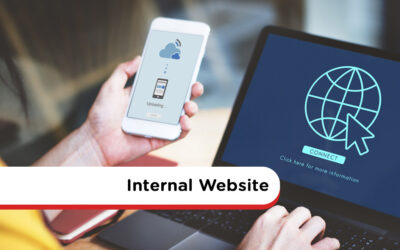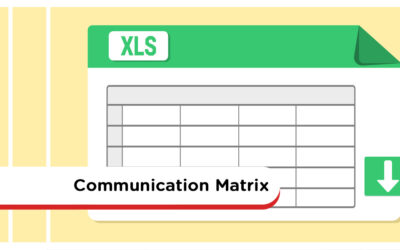Intranet Design Services
Choose from the self-build option with our support or work with one of our designers who will create a customized, fully-functioning intranet for your business, in 40 days or less, guaranteed!
The Challenge: Lack Of Time
You’ve defined your requirements and you know MyHub can deliver the outcomes you’re looking for. But do you lack the time and resources to customize your MyHub intranet site and get it launched on time?
The Solution: We Do It For You
By engaging with one of our designers, we’ll remove all of the complexity and risk by doing it all for you.
Planning For Success
Your MyHub intranet designer will lead the engagement process and ensure you’re updated on progress. The process is broken down into three key stages including:

Scope & Commercials
- Gathering requirements
- Defining launch objectives and timelines
- Developing a site plan including key pages, modules and content
- Agreeing the scope of works, pricing and terms.

Site Design
- Adding a company logo and changing site color options
- Designing and adding pages
- Adding content to pages including images, news articles, text, video and forms
- Adding folders and files to the Document Exchange
- Adding users to the site, Role Groups and Roles

Launch
- Handover and training
- Post-launch support
- Free site audit at any time
MyHub Designers, Delivering Great Outcomes
Intranet Design Articles
Business Casual Dress Code For Workplaces
Business casual blends traditional office attire with a relaxed touch—think slacks, button-downs, blouses, chinos, knee-length skirts, and closed-toe shoes—but always polished and appropriate for your workplace. The guide highlights that the exact definition varies by industry, company culture, and format—what’s suitable in a startup may differ markedly from expectations in a law firm .
For men, staples include button-down shirts, fine knit sweaters, slacks or chinos, optional blazers, and polished closed-toe shoes . Women can choose from smart sweaters, blouses, structured dresses or skirts, tailored trousers, and modest heels or flats . The blog also addresses adaptable remote-work attire, emphasizing at least being presentable from the waist up for video calls .
It provides a handy cheat sheet of do’s and don’ts: no hoodies, crop tops, athletic wear, or flip-flops; avoid overly tight, baggy, or wrinkled clothes . When in doubt, err on the side of slightly overdressing, observe leadership, and adapt to seasonal changes while maintaining professionalism.
145 Digital Transformation Statistics You Need To Know
Digital transformation (DX) remains central to business strategy, especially post-pandemic. Organizations worldwide are rapidly increasing DX initiatives—97% of IT decision-makers are involved, and spending is projected to rise from $1.8 T in 2022 to $2.8 T by 2025. Despite this focus, most IT budgets (50–72%) still go toward maintenance rather than innovation, prompting rebalancing concerns.
Today, more than 90% of companies are undertaking DX projects and 87% of executives consider it a priority, yet only 44% feel prepared for disruption. Key drivers include operational efficiency (40%), faster time-to-market (36%), and improved customer experience (35%). However, DX failures often stem from employee resistance, lack of ROI clarity, and digital skills gaps—making cultural and human factors as critical as technology.
Looking ahead, DX trends point to continued investment—forecasted at 18% CAGR through 2030—with increased focus on hybrid work, AI, cloud, IoT, and employee experience platforms . Digital transformation is reshaping organizational structures, workflows, and customer interactions, making data-driven planning essential for staying competitive.
Team Celebration: The How, What, And Why
Celebrating team successes shouldn’t be reserved only for major milestones like big deals or record-breaking figures. According to the article, recognizing even small wins—such as completing a project or positive customer feedback—can have a powerful ripple effect by enhancing employee retention, productivity, and overall morale. Organizations are encouraged to make recognition a consistent part of their culture to reinforce positive behaviors and foster pride.
The guide outlines when to celebrate—such as first wins, project completions, role changes, or employee anniversaries—and how to do it creatively across different work environments. It offers practical ideas: in-person team outings, award ceremonies, meeting shout-outs, virtual lunches, care packages, and digital timelines. This ensures celebrations are relevant whether your team is in-office, remote, or hybrid
The post also addresses the importance of balancing public and private recognition. While team-wide shout-outs build unity, personal acknowledgments—like handwritten notes or one-on-one feedback—resonate deeply. Finally, it warns against misuse: avoid over-celebration, ensure equity, consider sensitivity (e.g., budget cuts), and follow up beyond one-off events . Together, these practices build a positive, inclusive celebration culture that benefits both people and the organization.
Internal Website: Uses, Features And Setup
A modern internal website—also known as an intranet—is a secure, employee-only platform that centralizes everything staff need: company news, documents, tools, and applications. Unlike external sites, intranets often suffer from outdated content and poor navigation, yet play a pivotal role in internal communications, information sharing, and teamwork
This guide outlines how intranets enhance information management, featuring integrated search, cloud document libraries, and a central hub to streamline access and eliminate inefficient shared drives. It also improves internal communication via interactive news feeds, blogs, and surveys—especially crucial for hybrid or remote workforces . Beyond communication, intranets support collaboration and automated workflows, enabling real-time document co-editing, team forums, and form-based process automation for tasks like leave requests, approvals, and reporting .
To roll out an effective internal website, the blog recommends evaluating three build options—DIY, off-the-shelf tools, or cloud-based intranet software. It emphasizes essential features: intuitive setup, mobile responsiveness, high usability, cost effectiveness, and ready-to-go deployment. Templated cloud intranets stand out for quick deployment, mobile optimization, single sign-on, and user familiarity
Communication Matrix: A Step By Step Guide With Free Template
A communication matrix is a strategic tool designed to organize and streamline internal communications across projects, teams, and the whole organization by mapping content, audience, frequency, channel, and ownership into a clear, one-page framework. Especially valuable for hybrid and remote environments, it helps teams decide what to communicate, when, to whom, and through which medium—making sure nobody is left out or overwhelmed .
The guide dives into the essential components—content, purpose, frequency, audience, deliverables, channels, and owners—and explains how these elements work together to make communication purposeful and consistent. It emphasizes using a simple tool like Excel or Google Sheets for easy setup and live collaboration.
The article also outlines key benefits: faster decision-making, higher transparency, optimized resource use, better collaboration, and adaptability to change. With included real-world examples—a monthly newsletter and project-team matrix—and a free download link, it shows how quick and impactful implementing this tool can be.
55 Questions To Ask A CEO
High engagement levels across organizations have made CEOs more accessible than ever—appearing in town halls, online Q&As, and casual hallway chats. This increased visibility means employees now have rare face-to-face time with top leadership. To make the most of such moments, the blog emphasizes the importance of preparation: thoughtful, well-targeted questions help you stand out, build rapport, and even elevate your career.
The post categorizes 55 insightful questions into key themes: corporate culture, company goals, operations, CEO career path, personal interests, and ways to make the right impression. From probing culture with “What three words best describe our company?” to gaining personal insight via “What motivates you when things get tough?”, each question is framed for specific formats—town halls, small group settings, or one-on-one conversations.
To round it out, the article offers top tips to guide your approach: be prepared with a few select questions, match the tone to the forum, offer your own thoughts when it’s intimate, and above all, remain genuinely enthusiastic. Done right, this isn’t just a chat—it’s an opportunity to connect, learn, and make a positive, lasting impression.







